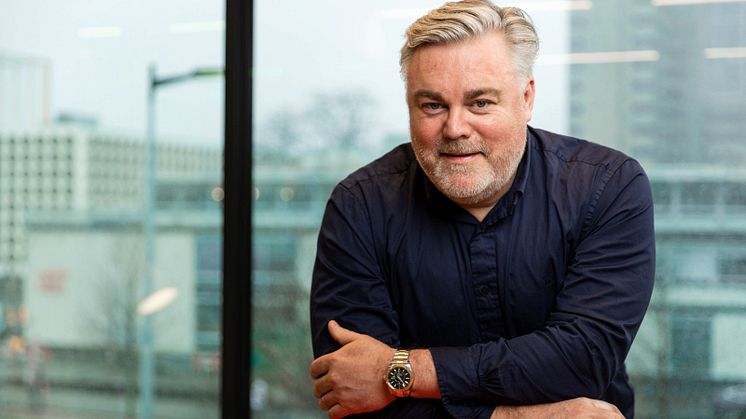
Press release -
Underutilised opportunities: How auctions can succeed in the B2B market and where they currently fall short
The market for trading used industrial goods is already worth hundreds of billions, yet auctions account for only a small fraction of it. Many people associate auctions with financial distress and insolvency, while lack of awareness and a fragmented market pose additional barriers. Tom Christenson, CEO of TBAuctions, discusses the transformation of the auction business for used industrial goods ...
Auctions are well-established in many areas – from the famed art auctions at houses like Sotheby’s and Christie’s to online consumer platforms like eBay, which radically changed private trade in the late 1990s. However, not all industries hold auctions in high regard. Particularly, the sale of used industrial goods in the B2B sector is often associated with insolvencies and forced liquidations.
One believer in the potential of auctions is Tom Christenson, CEO of TBAuctions, already Europe's largest multi-brand auction platform for used business goods. Formed in 2018, today the group unites eight successful auction houses across Europe and key industries such as agriculture, transport, construction, metal and wood processing, medical technology, food, and pharmaceuticals. Since taking over leadership a year ago, Christenson has further accelerated the already clear strategy. The mission: to establish auctioning generally as the best method for buying and selling used industrial goods.
Insolvency myth in the B2B sector
“In most European countries, the auction house is considered the last resort. You only go there if you are bankrupt or about to be,” explains Christenson. Yet, there are many compelling reasons to sell used economic goods through auctions. Companies use these platforms to liquidate their assets quickly and efficiently, especially when they are modernising their operational equipment or replacing expiring models. Christenson notes, “Auctions can also be a strategic driver. Machines can be purchased flexibly and quickly for a project and then sold immediately after its completion.”
The market for the sale of used industrial goods is vast, encompassing about 250 billion euros per year across Europe. However, only about 2% of this is conducted through auctions – with a growing trend.
The five major challenges of the used goods trade
Christenson and TBAuctions have identified five main problems that are reasons for both sellers and buyers not to trade their used goods at all or not through auctions.
- Intransparency of fair market value: The value of used economic goods is often difficult to determine. There are no fixed price lists, and supply and demand can change rapidly. The price of a used machine is composed of factors such as type, manufacturer, age, demand, and availability. “For the goods sold on our platform, the price is often incomprehensible to both buyers and sellers,” explains Christenson.
- Fragmented market: The used goods trade is highly dispersed, making it difficult for both sellers and buyers to navigate. Many different platforms offer numerous options. Sellers often do not know where to find suitable buyers. And due to this fragmentation, it is often difficult for buyers to find the desired item.
- Complex transaction process: The purchase and sale of used industrial goods, particularly machines, are associated with a technically demanding transaction process. From dismantling, transport, rebuilding, and re-commissioning, each step involves risks that deter both potential buyers and sellers.
- Lack of trust between parties: There is often mistrust between sellers and buyers. “Sellers primarily aim to achieve the highest possible profit, while buyers naturally expect a fair price,” says Christenson.
- Difficult to measure the ecological impact: More and more companies are calculating their greenhouse gas emissions and certifying their Corporate Carbon Footprint (CCF). Sustainability is an important motive in the trade of used goods. Because buying and selling used business goods makes a significant contribution to reducing environmental impact. However, precisely quantifying these emission savings is challenging.
Despite these challenges, TBAuctions deliberately relies on the auction principle. Christenson states, “Transparent price determination within the auction dynamics realistically and understandably determines the market value of an item. Additionally, the publication of the bid history at our auction houses strengthens trust in the fairness of the auctions.”
With the recent acquisition of Surplex, TBAuctions also expands its portfolio. “Surplex brings years of expertise in organising dismantling, transport, and rebuilding. We have not been able to offer this at TBAuctions before,” explains Christenson. This integrated approach is a central element of the TBAuctions strategy, aiming to take the best from all brands and develop them further. Thus, TBAuctions is working on each of these five factors to improve the image of auctions in the B2B market and establish them as what they are: the best way for buyers and sellers to trade used goods.

Related links
Categories
About Surplex
Surplex has been one of Europe’s leading industrial auction houses for 25 years and trades worldwide in used machines and factory equipment. The 18-language auction platform Surplex.com has over 125,000 registered customers. The company is based in Düsseldorf and has offices in many European countries, including Spain, Italy, and CEE. More than 200 provide a full service in 20 languages.
Surplex became part of TBAuctions in August 2024, Europe’s leading multi-brand (Troostwijk Auctions, Klaravik, Auksjonen, PS Auction, British Medical Auctions, Vavato, and Auktionshuset dab), digital auction platform for B2B used goods. The TBAuctions group reach nearly 245 million annual site visits, sell over 2.1 million assets, receiving bids from 700k bidders in 175 countries, generating hammersales of more than €1.5 billion, and employing nearly 1,200 team members.


